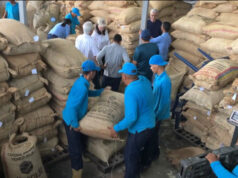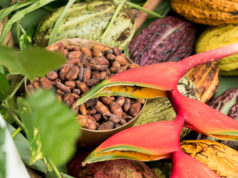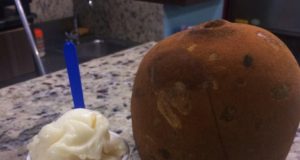By Juan Pablo Crespo
Photos: Leonardo Villa
She wriggles her waist to the beat of the drums, while her wavy hair blows to the rhythm of her feet … him, too, with sun-tanned skin, tries to enclose her in his arms, but the girl slips away. Although the hands never get tired of drumming and continue to imbue the atmosphere with its peculiar flavour … meanwhile, he and she do not get tired of dancing…

The drums in Venezuela are a musical expression that has its origin in the African slaves that settled mainly on the coasts of the country, brought by the Spanish colonizers. In this way, religious practices and African traditions merged to form a mixture of popular rhythms, full of songs and rituals, framed in a magical atmosphere. Each area developed its own cadences and designed the wide range of drums we know today.
“Whether it is the chimbangle, the tambourine bagpipe, the drum beat of Chuao or Caraballeda, each region has its own ‘particular swing’, its cadence to dancing,” it is said by Marcos Espinoza from the folkloric group Afrocodigos, the same that made everybody dance with its rhythms at the launching of Vivaelcacao.
For African-American percussion the group uses bells of San Millán, cumacos and quitiplás, among other typical instruments that are part of the living history of Venezuela.

The expert on Afro-Venezuelan artistic expressions, Juan Luis Martínez, explains that the drums have been beating for more than 400 years in our country. “This music is, in some way, the result of the syncretism from the suffering of slaves, indigenes and even whites who arrived in Venezuela.”
From the East to the West, passing through the centre, the drums resound, spreading joy and even spiritual liberation, especially on certain holidays when towns unite as one, leaving work aside. The chimbangles, for instance, are associated with San Benito celebrations, very popular in the South of Lake Maracaibo, land of exquisite cocoas, such as Porcelana and Guasare. In the centre of the country, Espinoza reminds us that the connection is with San Juan Bautista, every June 24.

“Drumming of San Juan drums sometimes starts on the 23rd, but the 24th is the most important day because it was the only one allowed to the slaves to celebrate.” In the San Juan celebration, wishes are usually made for abundance, for the family union, for health and why not, for a new couple.
In Aragua and Miranda states the beats in honour to the saint are also massive celebrations dressed on white and red colours. The Mirandino village of Curiepe is one of those good examples of joy bound to local drums, such as the mina and culo e’puya.

Aragua, indeed, is the cradle of Chuao cocoa, which has had Denomination of Origin for more than 15 years. “Chauo cocoa is one of the purest in the world because it is nestled on a mountain in the Henri Pittier National Park, a pollution-free zone,” Espinoza says. “In Chuao is used a long-frame side drum named redoblante, which is played by a single person and the songs are performed by women. They also have other very rich beats, such as paraiso, chuao or plaza, “he adds.
On the coasts of Aragua, fishermen use to taking San Juan out in a maritime procession with little colourful decorations.

The leader of Afrocodigos notes that some theories developed by scholars of Afro-Venezuelan music explain the typical drum dance step, with one foot moving and lifting slightly, while the other is almost affixed on the ground, the same on which the slaves carried a shackle that hindered their movements.
“Our drums are part of our identity. We speak of an artistic language connected with the historical past” Espinoza adds.
In each instance, the artist encourages the traditional Venezuelan music to be institutionalised, educated and even, included in the study programmes of universities. “Every child, every young person, must know our original music first-hand”.
As well as cocoa … Hail to Venezuelan drums!








